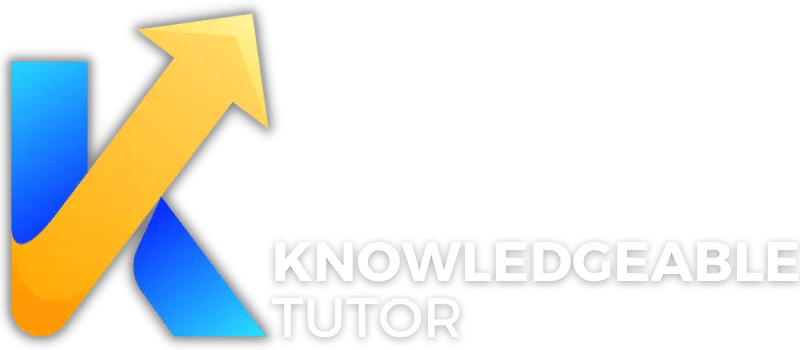AI-Assisted Tutoring Tools And Their Impact

Fanie Naude
CEO & Founder of Knowledgeable Tutor, Buznet Direct, YMC & Naude Consulting

Fanie Naude
CEO & Founder of Knowledgeable Tutor, Buznet Direct, YMC & Naude Consulting
In This Article
I. Introduction
II. What Are AI-Assisted Tutoring Tools?
III. The Technological Framework Behind AI-Assisted Tutoring
IV. Benefits of AI-Assisted Tutoring
V. Ethical Considerations in AI-Assisted Tutoring
VI. The Pros and Cons of AI-Assisted Tutoring
VII. Real-world Applications of AI-Assisted Tutoring
VIII. The Future Scope of AI-Assisted Tutoring
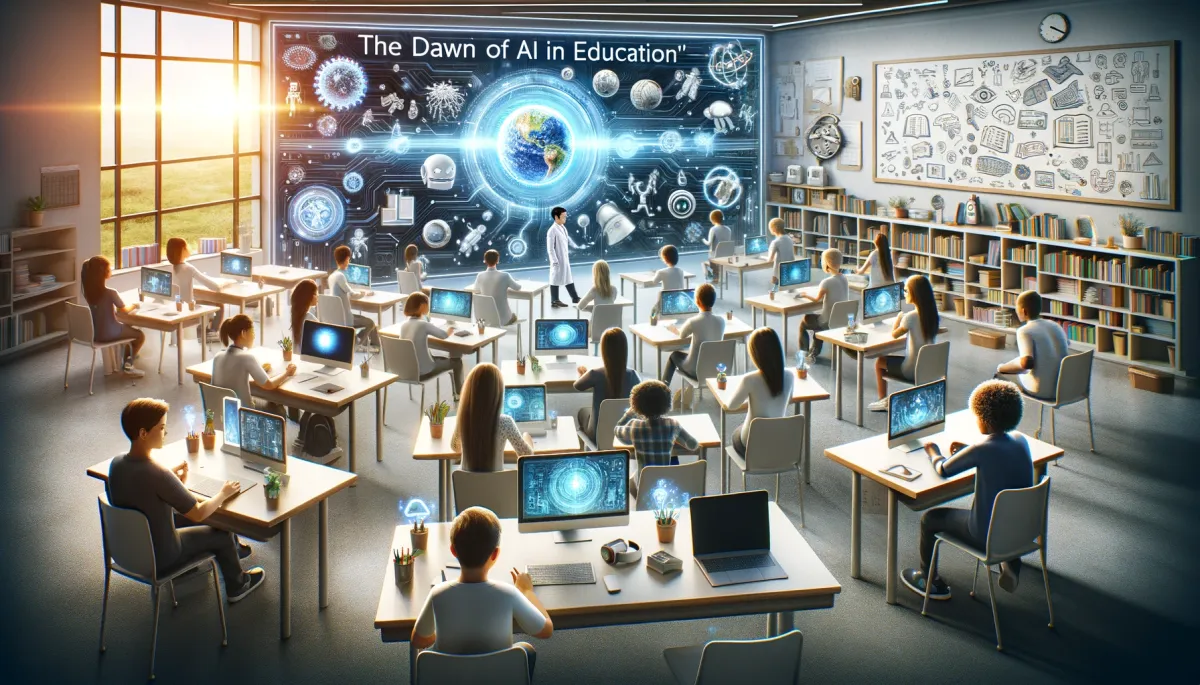
I. Introduction: The Dawn of AI in Education
The advent of Artificial Intelligence (AI) has been nothing short of revolutionary, particularly in the realm of education. As Alan Kay wisely said, "The best way to predict the future is to invent it." Indeed, AI is not just a prediction but a reality that is reshaping the educational landscape.
The Statistical Landscape
According to a report by Grand View Research, the global AI in education market was valued at USD 1.82 billion in 2021 and is expected to expand at a CAGR of 36.0%. These numbers are not just digits but a testament to the transformative power of AI in education.
| Year | Market Value (USD Billion) | CAGR (%) |
|---|---|---|
| 2021 | 1.82 | N/A |
| 2022 | ~2.47 | 36.0 |
| 2030 | ~25.6 (Projected) | 36.0 |
The Human Element
While statistics provide a quantitative perspective, the human element is equally compelling. AI is not merely a tool but an extension of the educational ethos. It serves as a personalized mentor, a responsive evaluator, and a dynamic resource generator.
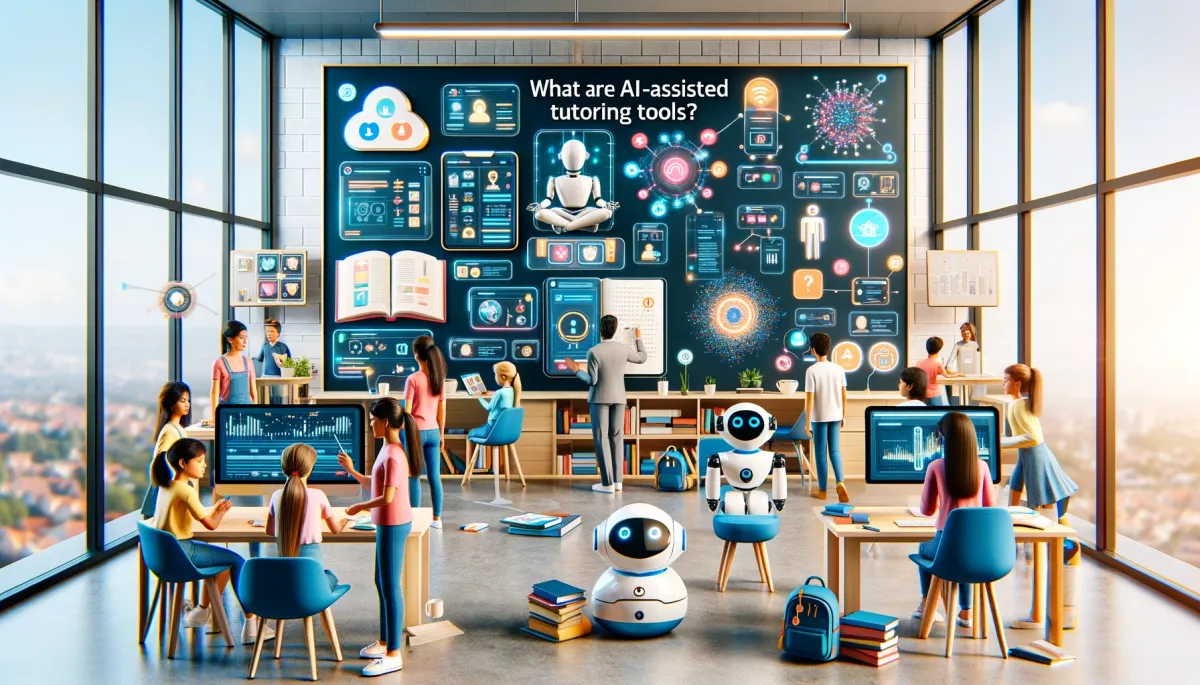
II. What Are AI-Assisted Tutoring Tools?
AI-assisted tutoring tools are a subset of educational technology that leverages machine learning algorithms, natural language processing (NLP), and data analytics to provide a tailored learning experience.
Types of AI-Assisted Tutoring Tools
- Adaptive Learning Platforms: These platforms adjust the learning material based on the student's performance and learning style.
- Chatbots: Utilizing NLP, these bots can answer queries, provide explanations, and even grade assignments.
- Predictive Analytics Tools: These tools analyze past performance to predict future learning outcomes.
Underlying Technologies
- Machine Learning: Algorithms that enable the system to learn from data.
- Natural Language Processing: Allows the system to understand and respond in human language.
- Adaptive Learning Algorithms: Tailor the learning experience based on individual needs.
Real-World Example
A case in point is the use of AI tutoring in Newark schools with Khan Academy. The program has been instrumental in democratizing education by providing customized learning experiences to students, thereby bridging the educational gap.
In summary, AI-assisted tutoring tools are not just technological marvels but catalysts for educational equity and excellence. They embody the fusion of technology and pedagogy, designed to elevate the learning experience to unprecedented heights.
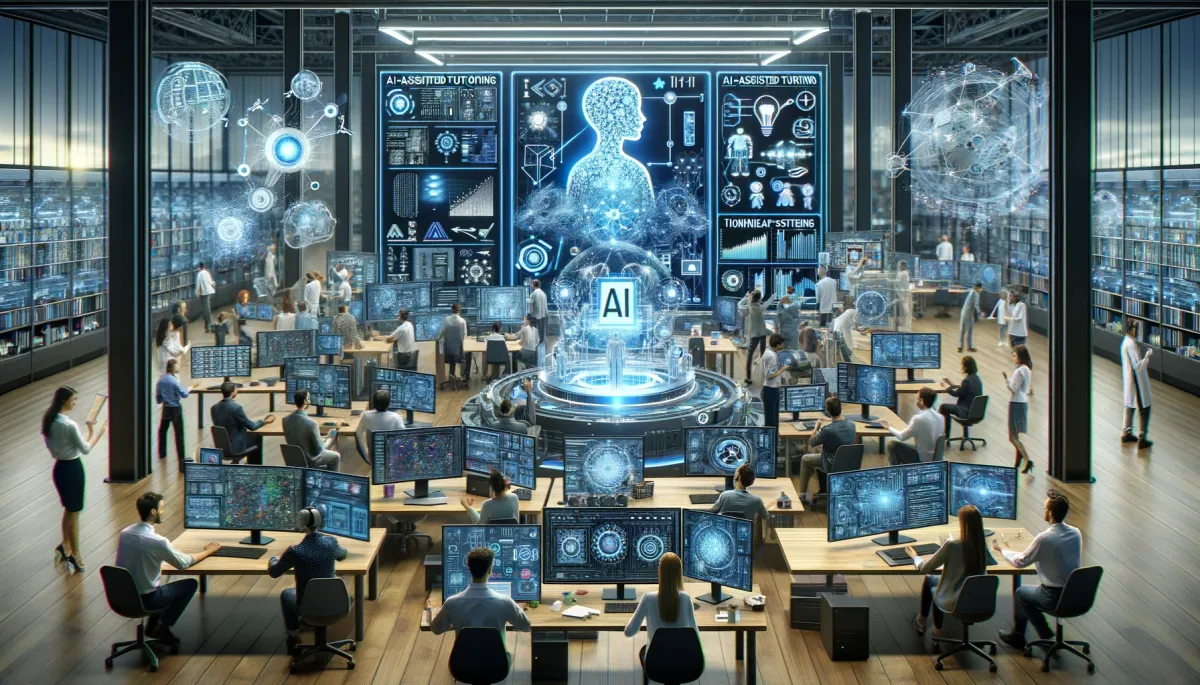
III. The Technological Framework Behind AI-Assisted Tutoring
The technological framework of AI-assisted tutoring is a complex interplay of algorithms, data analytics, and user interfaces. It's akin to the neural network of the human brain, where each node serves a specific function yet collaborates seamlessly with others.
Core Technologies
- Machine Learning Algorithms: These are the building blocks that enable the system to learn from data and make decisions.
- Natural Language Processing (NLP): This technology allows the system to understand and generate human language, making interactions more intuitive.
- Data Analytics: This involves the collection and analysis of data to improve the system's performance and provide insights.
A Common Framework for AI in Higher Education
According to a research paper published on ERIC, a common framework for AI in higher education (AAI-HE model) has been developed. This model serves as a blueprint for implementing AI technologies like chatbots, intelligent tutoring systems, and automated assessment systems.
Case Study: Newark Schools and Khan Academy
The Newark schools' partnership with Khan Academy serves as a real-world example of how this technological framework can be effectively implemented. The program uses machine learning algorithms to customize learning paths for each student, thereby democratizing education.
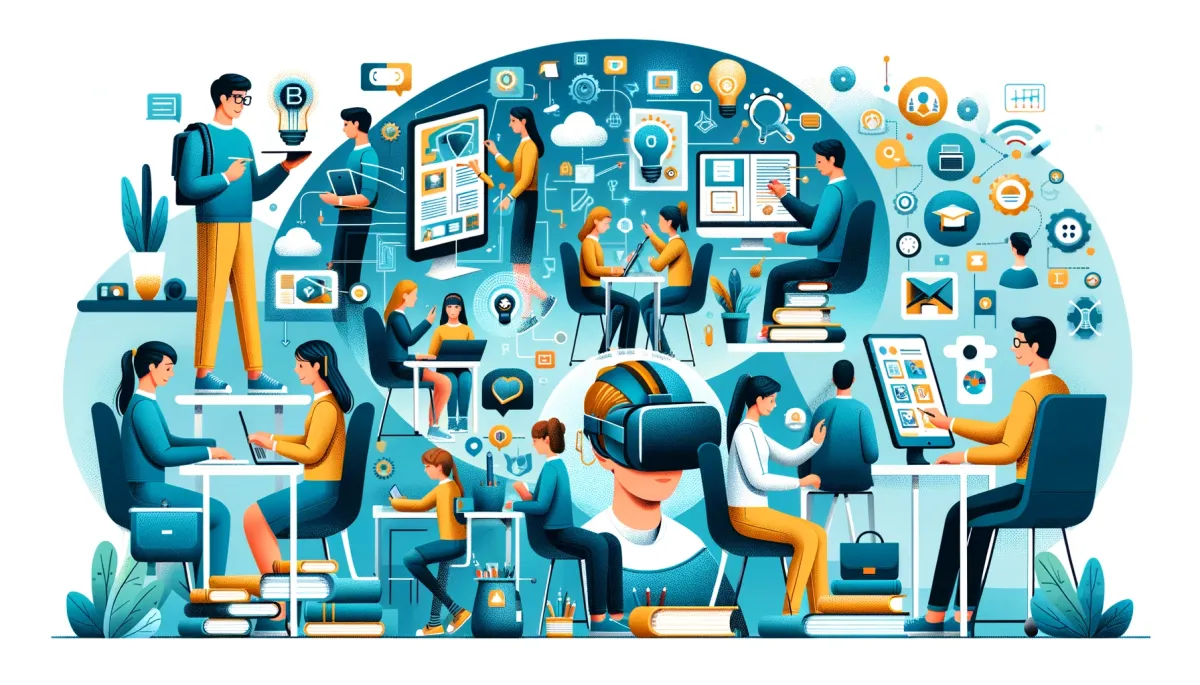
IV. Benefits of AI-Assisted Tutoring
The advantages of AI-assisted tutoring are manifold, extending beyond mere academic improvement to foster a more holistic educational experience.
Personalization
- Adaptive Learning Paths: The system adjusts the curriculum based on the learner's pace and understanding.
- Instant Feedback: Immediate corrections and suggestions can significantly improve the learning process.
Scalability
- One-to-Many Tutoring: One AI system can simultaneously cater to multiple students, breaking the one-to-one tutoring model's limitations.
Real-Time Feedback
- Automated Assessments: Instant grading and feedback save time for both tutors and students, allowing for a focus on improvement areas.
For a more detailed exploration of effective online tutoring technologies, consider reading our article on Tools and Technology for Effective Online Tutoring.
In essence, AI-assisted tutoring tools serve as a multi-faceted educational companion, offering personalized, scalable, and real-time educational solutions. They are not just a technological advancement but a pedagogical revolution.
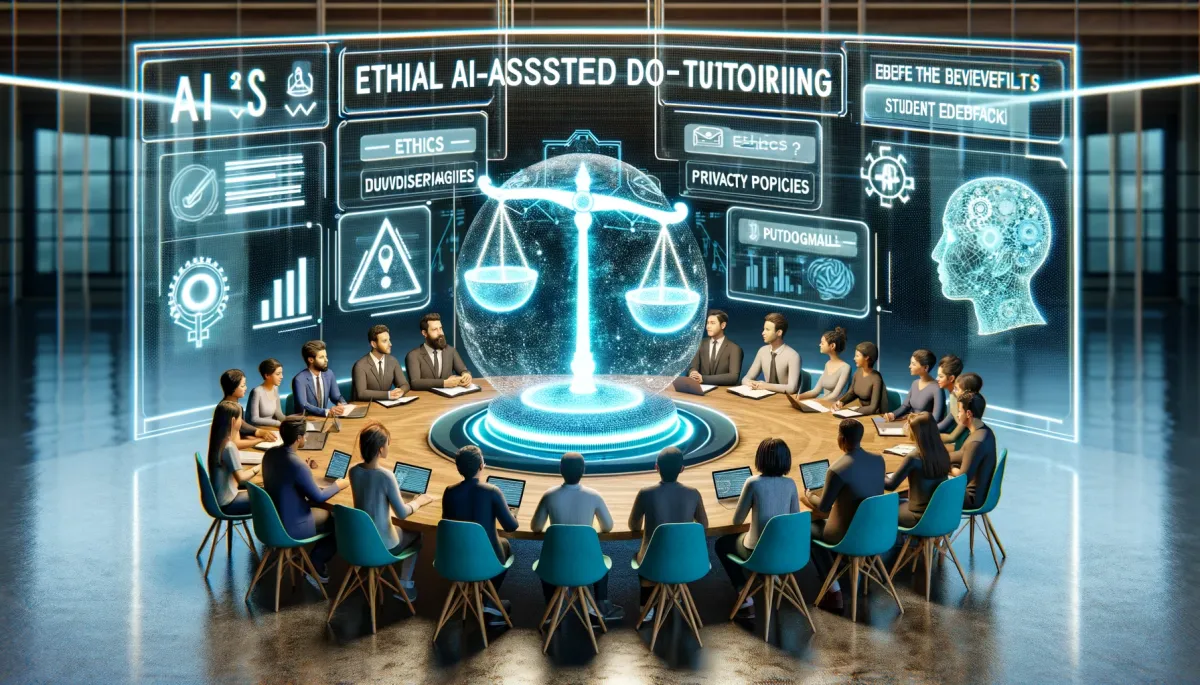
V. Ethical Considerations in AI-Assisted Tutoring
Ethics in AI-assisted tutoring is a subject that cannot be overlooked. As Nelson Mandela once said, "Education is the most powerful weapon which you can use to change the world." However, the power of education, especially when augmented by AI, comes with ethical responsibilities.
Data Privacy
- GDPR Compliance: Ensuring that the data collected is in compliance with regulations like GDPR is crucial.
- User Consent: Obtaining explicit consent from users for data collection and usage.
Algorithmic Biases
- Fairness: Ensuring that the algorithms do not favor one group of students over another.
- Transparency: Making the algorithms transparent so that they can be audited for fairness.
Ethical Frameworks
According to a paper published on NCBI, ethical challenges in AI education must be identified and introduced to teachers and students. The paper outlines key ethical considerations like human agency and fairness.
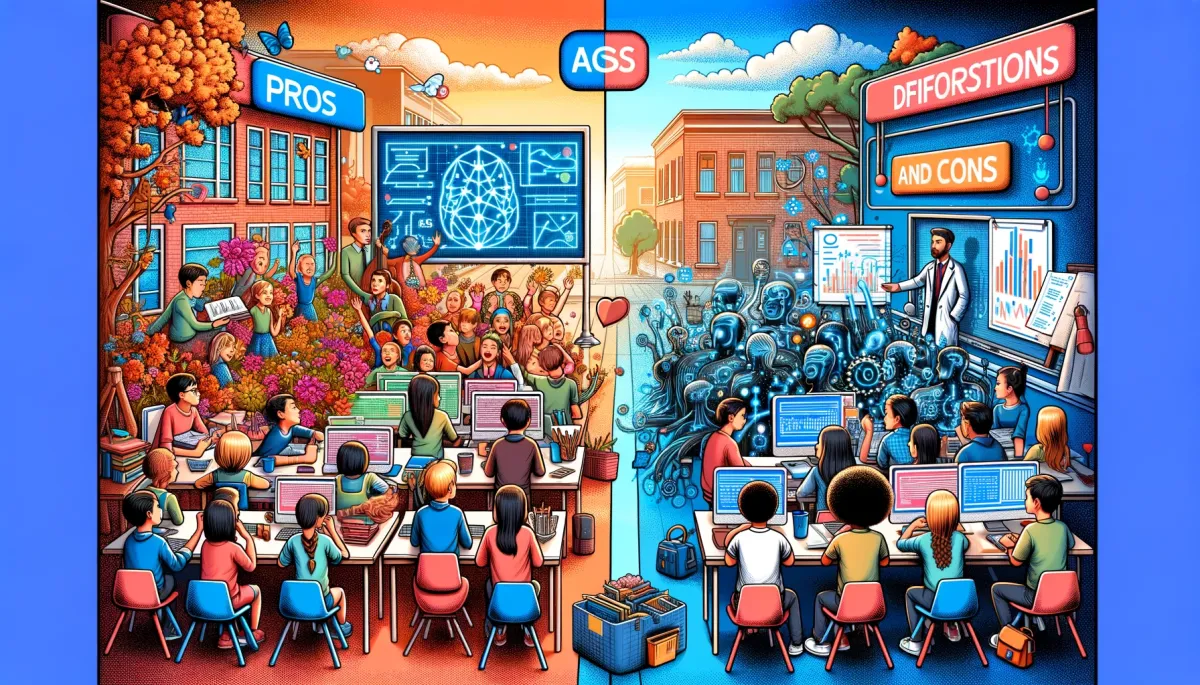
VI. The Pros and Cons of AI-Assisted Tutoring
While AI-assisted tutoring offers a plethora of benefits, it's essential to consider the flip side of the coin. A balanced view is crucial for making informed decisions.
Pros
- Personalization: Tailored learning experiences for each student.
- Scalability: One system can cater to multiple students simultaneously.
- Real-Time Feedback: Instant grading and feedback mechanisms.
Cons
- Cost: High initial setup and maintenance costs.
- Digital Divide: Not all students have access to high-speed internet and advanced devices.
- Teacher Resistance: Some educators may be resistant to adopting new technologies.
For a more nuanced understanding of the impact of technology in tutoring, you may find our article on Blockchain Technology in Education and Tutoring enlightening.
In summary, AI-assisted tutoring is a double-edged sword. While it offers unprecedented advantages in personalization and scalability, it also poses challenges in terms of cost, accessibility, and ethical considerations.
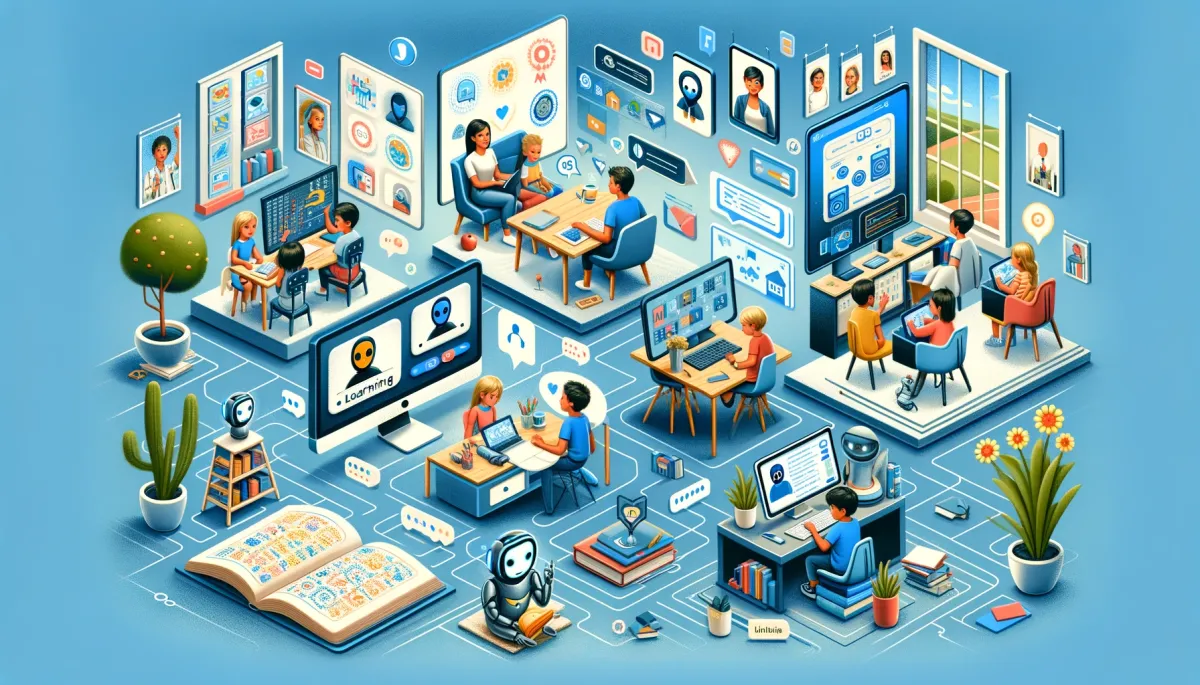
VII. Real-world Applications of AI-Assisted Tutoring
The real-world applications of AI-assisted tutoring are as diverse as they are impactful. As Nelson Mandela aptly put it, "Education is the most powerful weapon which you can use to change the world." AI-assisted tutoring is indeed becoming that potent weapon in the arsenal of modern education.
Educational Institutions and AI Tutoring
- K-12 Schools: AI tutoring is being used to supplement traditional teaching methods, particularly in subjects like Math and Science.
- Higher Education: Universities are employing AI to offer personalized learning paths and career guidance.
- Vocational Training Centers: AI is used to simulate real-world scenarios, making vocational training more effective.
Case Studies
- Georgia Tech's Jill Watson: An AI teaching assistant that handles queries in online courses. Source
- Carnegie Learning: Provides math tutoring through its AI-driven platforms. Source
For more insights into how technology is revolutionizing online tutoring, consider reading our article on Revolutionizing Online Tutoring with Cutting-Edge Technology Tools.
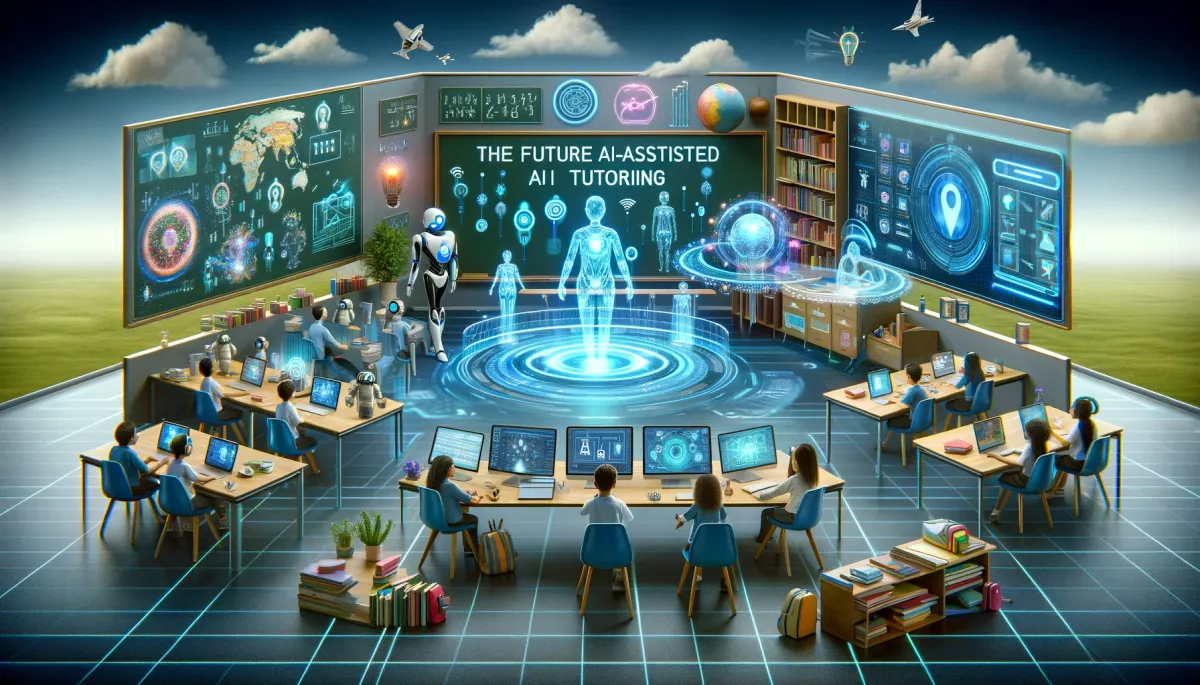
VIII. The Future Scope of AI-Assisted Tutoring
The future of AI-assisted tutoring is not just promising; it's transformative. From special education to vocational training, the applications are boundless.
AI in Special Education
- Personalized Learning Plans: AI can tailor educational content to suit the unique needs of students with disabilities.
- Speech Recognition: For students with speech impairments, AI can convert sign language to text and vice versa.
AI in Vocational Training
- Simulated Environments: AI can create virtual scenarios that mimic real-world job conditions, providing invaluable practical experience.
To explore how advanced technologies like blockchain are shaping the future of education, you may find our article on Blockchain Technology in Education and Tutoring enlightening.
In essence, the future of AI-assisted tutoring is a tapestry of endless possibilities, woven with threads of innovation, inclusivity, and excellence.
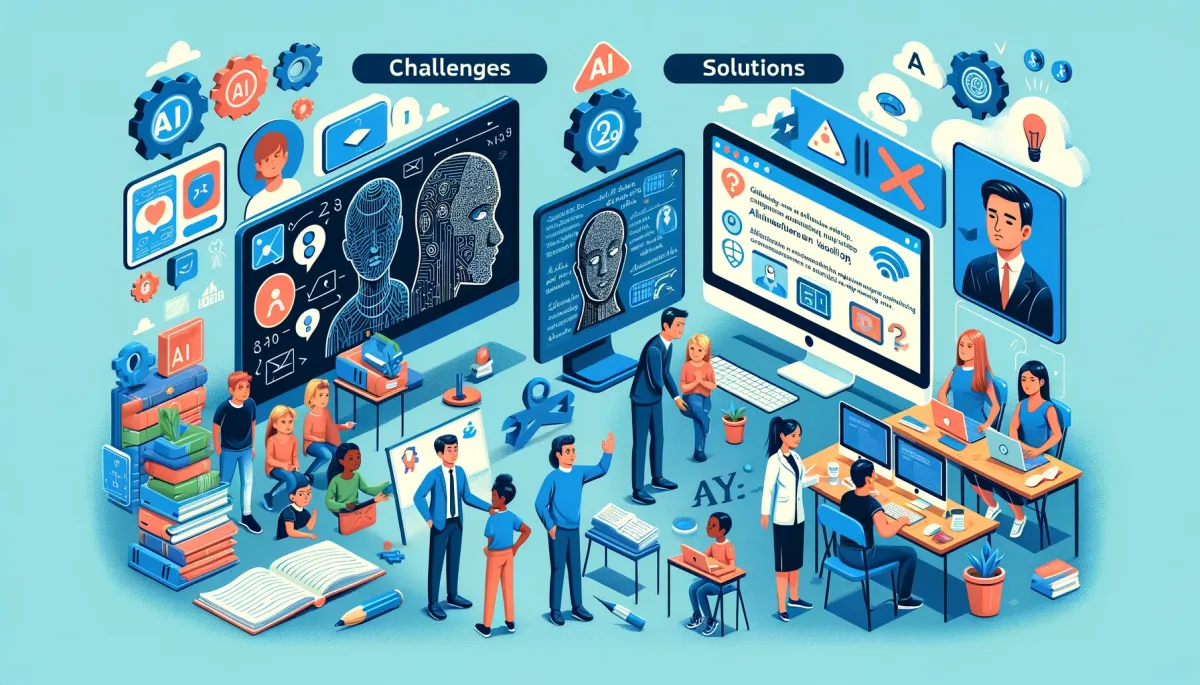
IX. Challenges and Solutions in AI-Assisted Tutoring
Navigating the landscape of AI-assisted tutoring is akin to sailing through uncharted waters. While the horizon is filled with promises, there are challenges that lie beneath the surface. However, as Winston Churchill once said, "A pessimist sees the difficulty in every opportunity; an optimist sees the opportunity in every difficulty."
The Digital Divide
- Challenge: Not all students have equal access to high-speed internet and advanced devices.
- Solution: Initiatives to provide subsidized internet and devices can help bridge this gap.
Cost Factors
- Challenge: The initial setup and maintenance costs can be prohibitive for some educational institutions.
- Solution: Government grants and public-private partnerships can alleviate this financial burden.
Teacher Resistance
- Challenge: Some educators may be resistant to adopting new technologies.
- Solution: Training programs and workshops can help teachers become more comfortable with AI tools.
Case Study: The Future of AI Tutoring in Higher Ed - New America
A report by New America delves into the challenges and solutions surrounding AI-based tutoring systems, particularly focusing on privacy and bias concerns.
For a deeper understanding of the challenges and opportunities in online tutoring, you may find our article on Utilizing Advanced Analytics in Online Tutoring beneficial.

X. Conclusion: The Call to Action
The journey of AI-assisted tutoring is a marathon, not a sprint. It requires the collective effort of educators, policymakers, and technologists to realize its full potential. As we stand on the cusp of an educational revolution, the call to action is clear: Embrace AI responsibly and inclusively to redefine the contours of education for the better.
Summary
- AI-assisted tutoring offers unprecedented advantages in personalization, scalability, and real-time feedback.
- Ethical considerations like data privacy and algorithmic biases must be addressed.
- Challenges such as the digital divide and cost factors exist but are surmountable.
For a comprehensive overview of how technology is revolutionizing online tutoring, consider reading our pillar page on Technology and Tools For Online Tutoring.
In the words of Steve Jobs, "Innovation distinguishes between a leader and a follower." Let us be the leaders in adopting AI-assisted tutoring tools, setting an example for the world to follow.
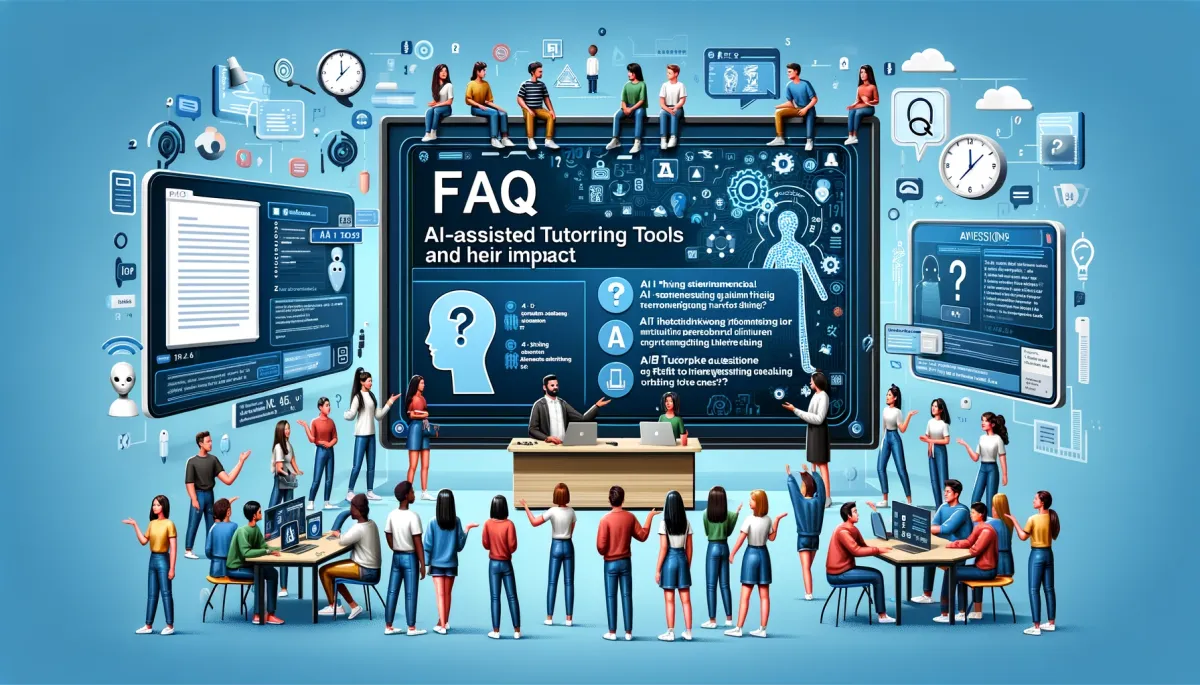
Frequently Asked Questions (FAQ)
The FAQ section aims to address common queries and concerns related to AI-Assisted Tutoring Tools and Their Impact. This section is designed to be a quick reference guide for educators, students, and anyone interested in the transformative power of AI in education.
1. What Are AI-Assisted Tutoring Tools?
AI-Assisted Tutoring Tools are software applications that leverage Artificial Intelligence (AI) to provide personalized, real-time tutoring to students. They use machine learning algorithms, natural language processing, and data analytics to adapt to each student's learning style.
2. How Do AI-Assisted Tutoring Tools Work?
These tools work by collecting data on student performance and using machine learning algorithms to adapt the curriculum accordingly. They can provide instant feedback, grade assignments, and even offer personalized learning paths. For more details, refer to our section on The Technological Framework.
3. What Are the Benefits of Using AI-Assisted Tutoring Tools?
The primary benefits include personalized learning experiences, scalability, and real-time feedback. These tools can adapt to each student's learning pace, thereby improving educational outcomes. For an in-depth look, visit our section on Benefits of AI-Assisted Tutoring.
4. Are There Any Ethical Concerns?
Yes, ethical considerations like data privacy and algorithmic biases are crucial. Ensuring GDPR compliance and obtaining user consent for data collection are some of the steps that need to be taken. For more information, check out our section on Ethical Considerations.
5. What Are the Challenges and How Can They Be Overcome?
The challenges include the digital divide, high costs, and teacher resistance. Solutions involve providing subsidized internet, government grants, and training programs for teachers. For more insights, refer to our section on Challenges and Solutions.
6. How Are Educational Institutions Implementing AI Tutoring?
Educational institutions are employing AI tutoring in various capacities, from K-12 schools to higher education and vocational training centers. Real-world applications can be found in our section on Real-world Applications.
7. What Is the Future Scope of AI-Assisted Tutoring?
The future scope includes applications in special education and vocational training. AI can tailor educational content to suit the unique needs of students with disabilities and simulate real-world job conditions. For more, visit our section on The Future Scope.
8. Can AI Replace Human Tutors?
While AI can significantly enhance the tutoring experience, it is not meant to replace human tutors. The goal is to augment human capabilities and provide a more personalized, efficient learning experience.
9. What Are Some Real-World Examples of AI-Assisted Tutoring?
Some notable examples include Georgia Tech's Jill Watson and Carnegie Learning's math tutoring platforms. For case studies, you can refer to our section on Real-world Applications.
10. How Can I Get Started with AI-Assisted Tutoring?
Getting started involves choosing the right AI-assisted tutoring tool that aligns with your educational goals, ensuring it complies with data privacy regulations, and training educators to use it effectively.
